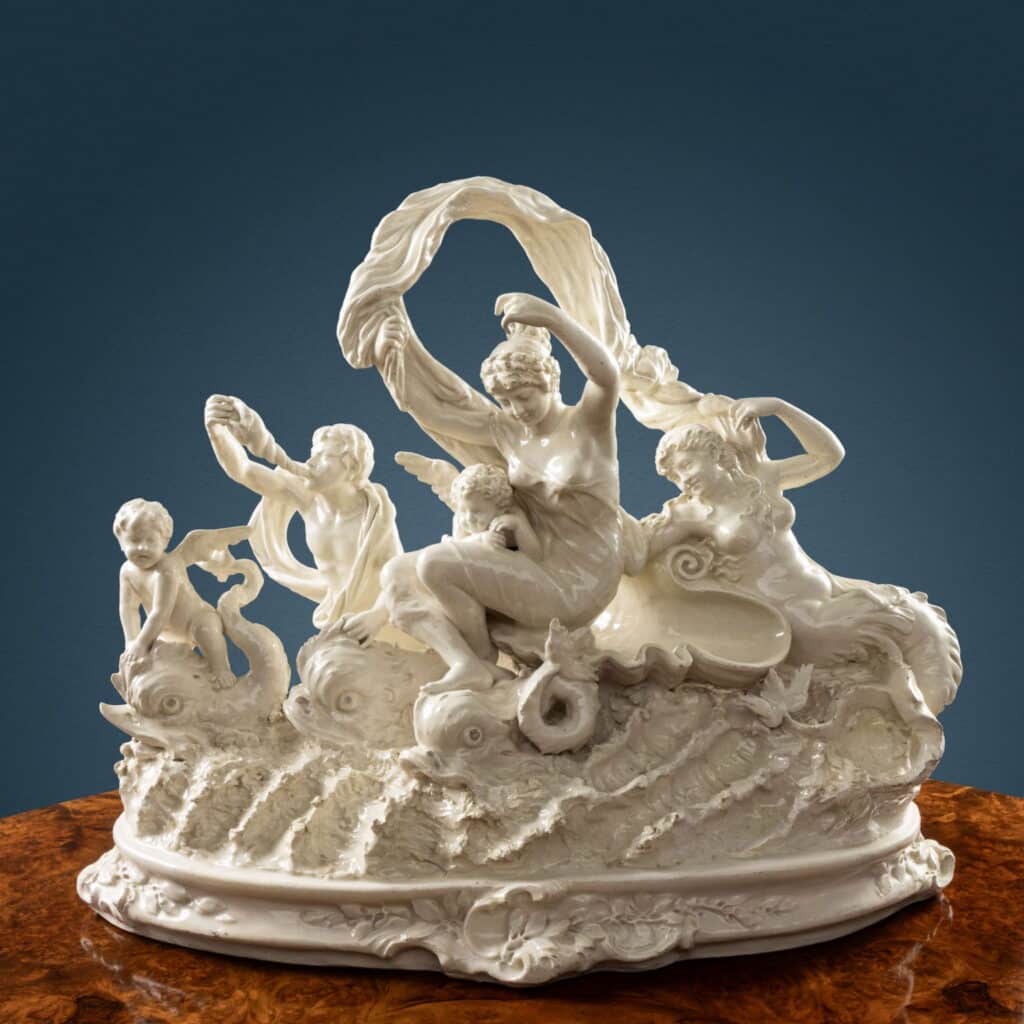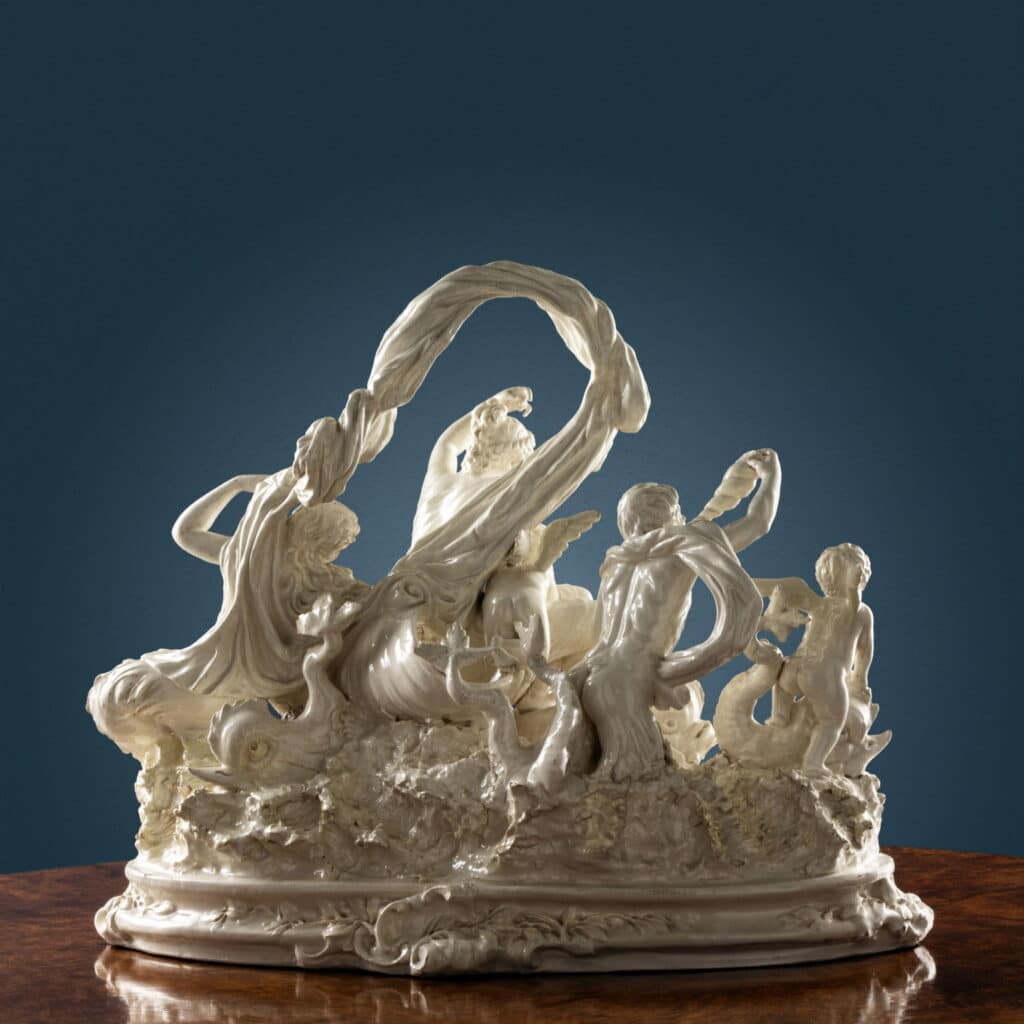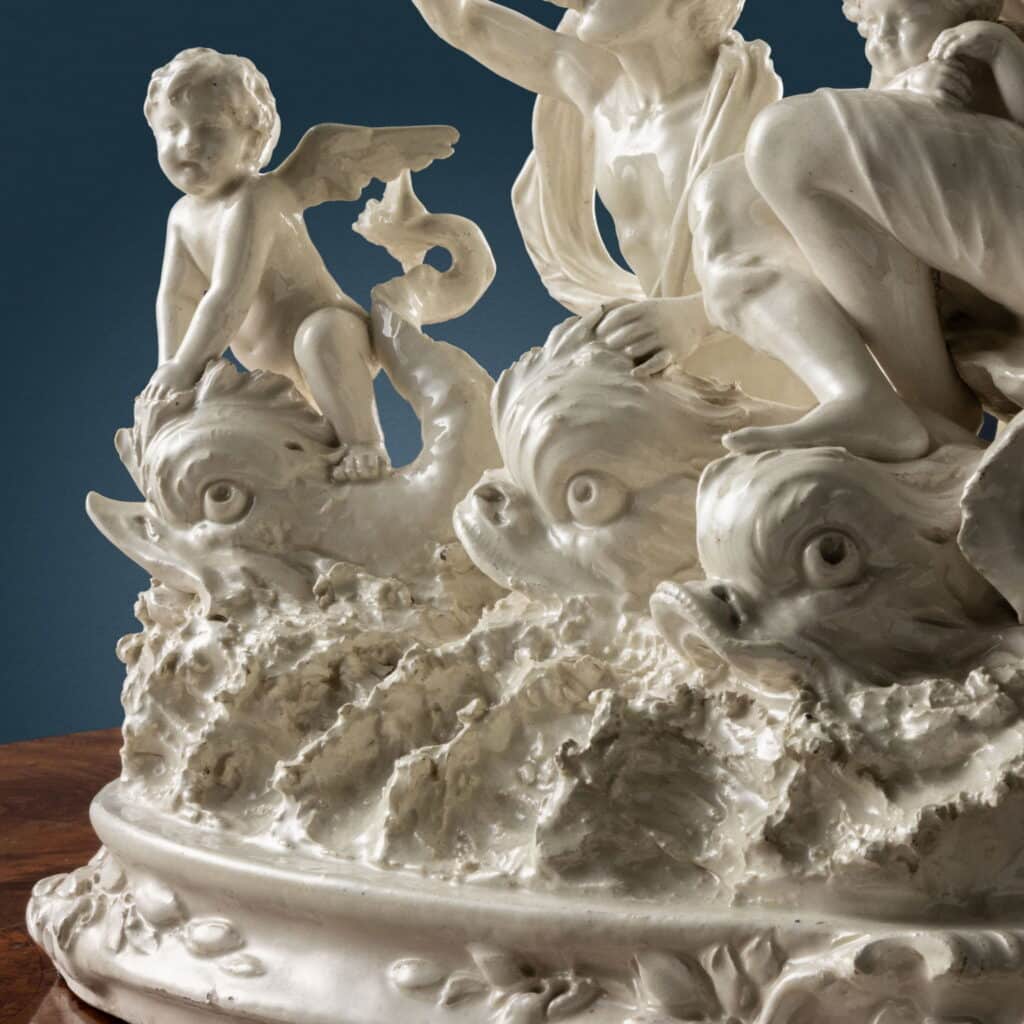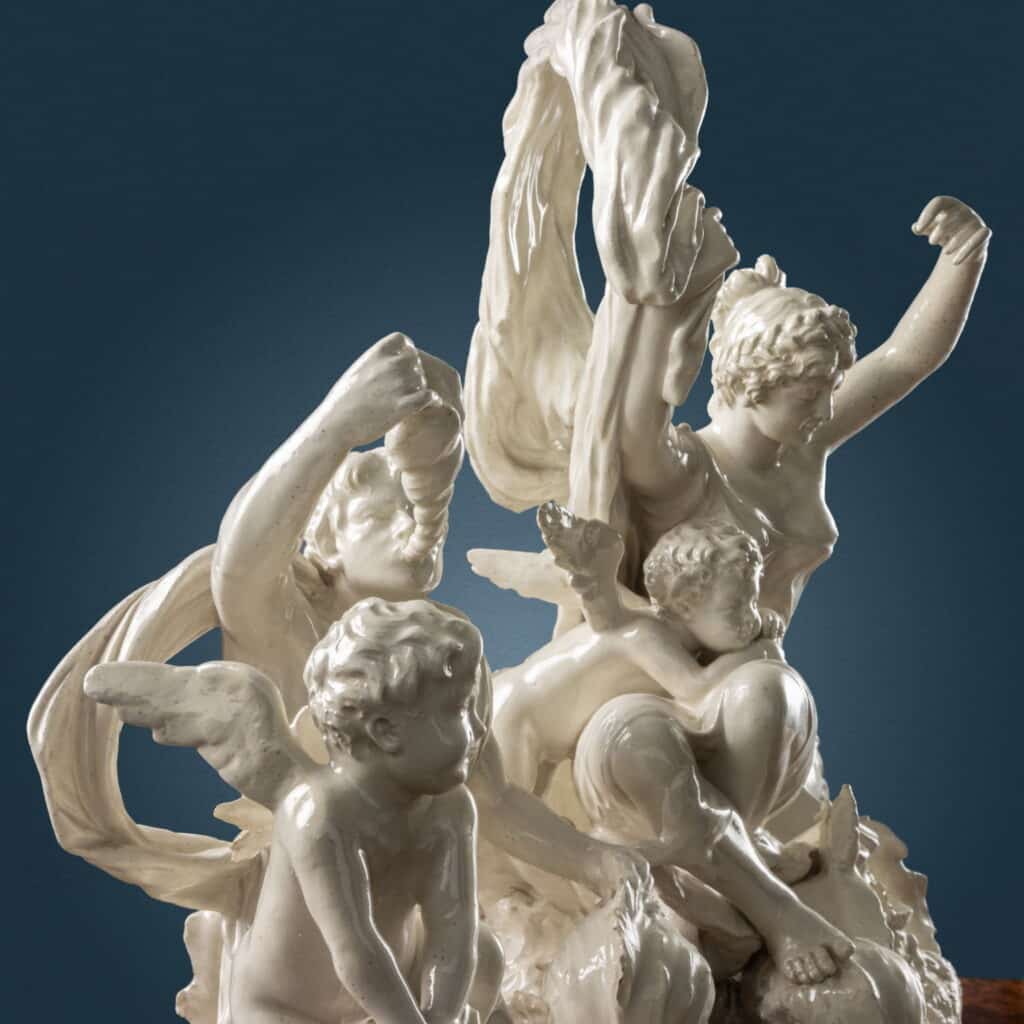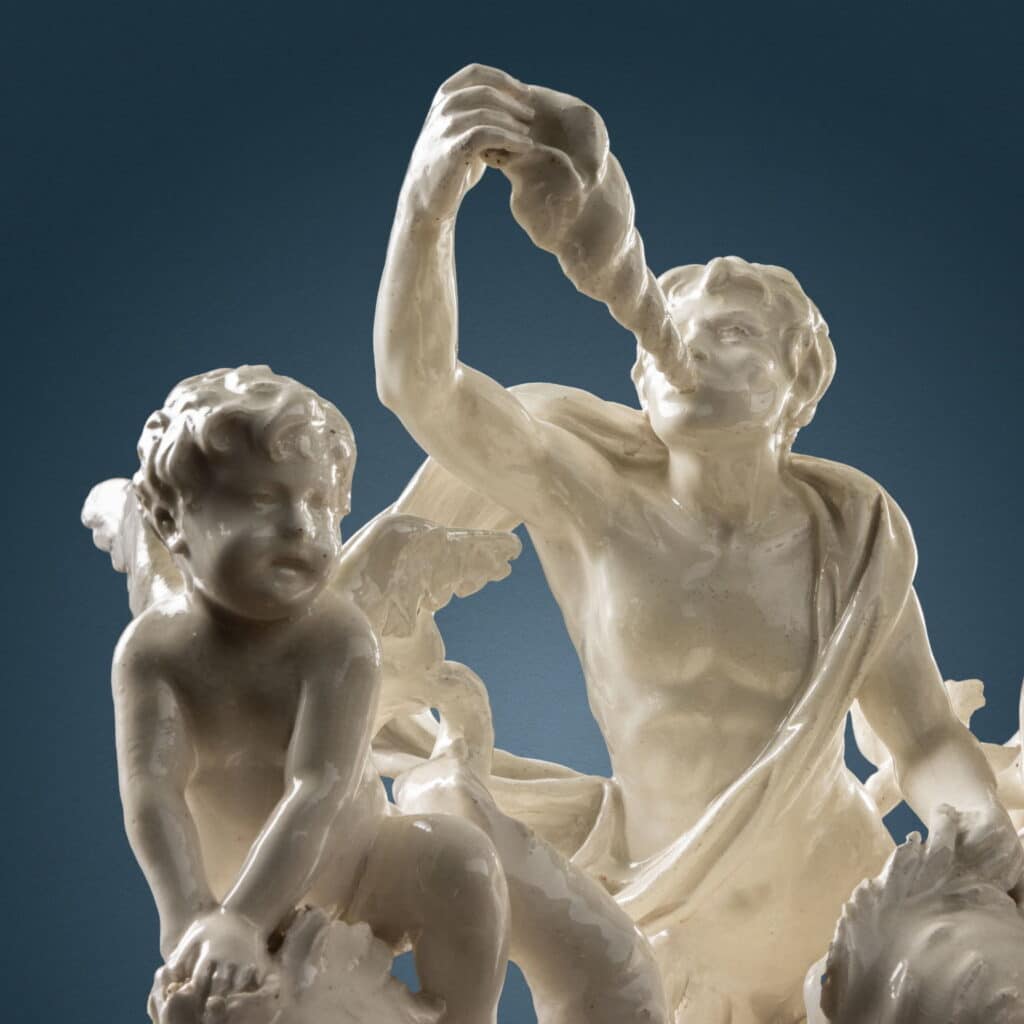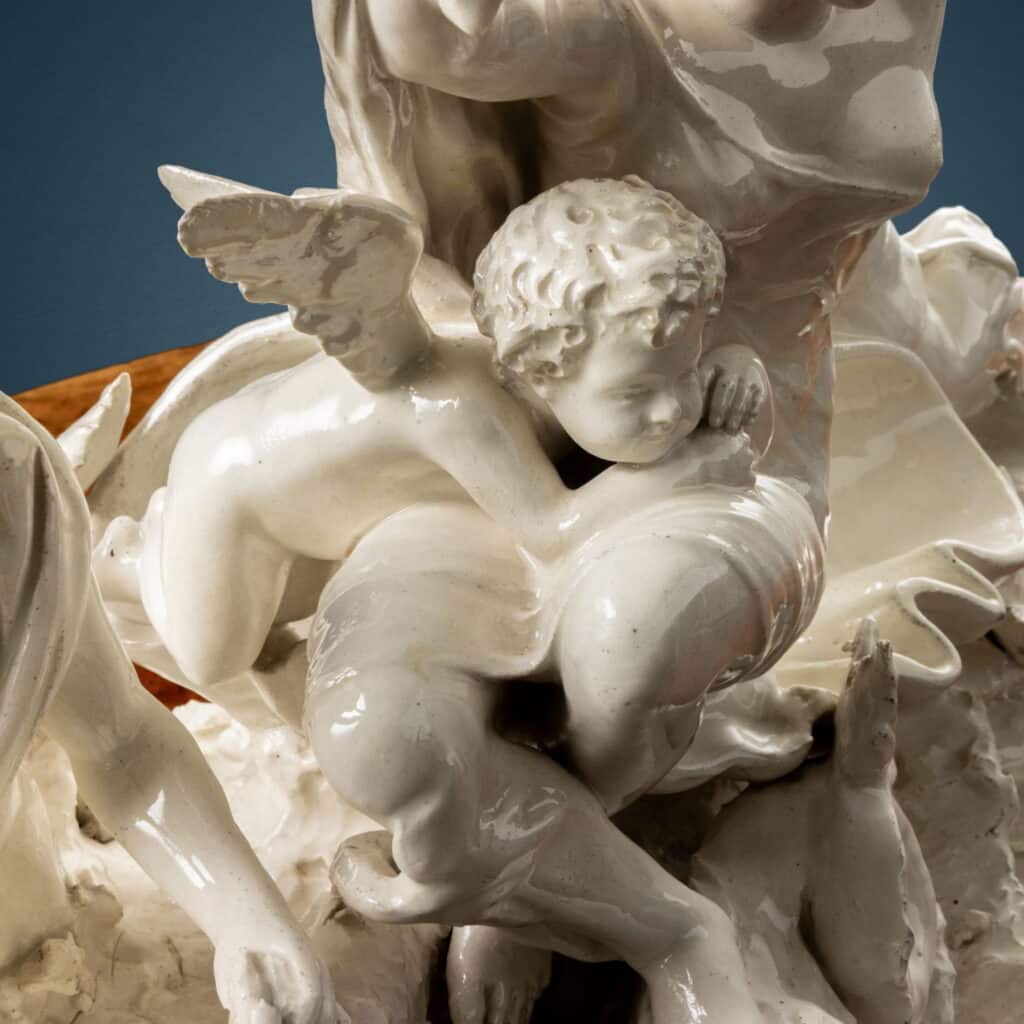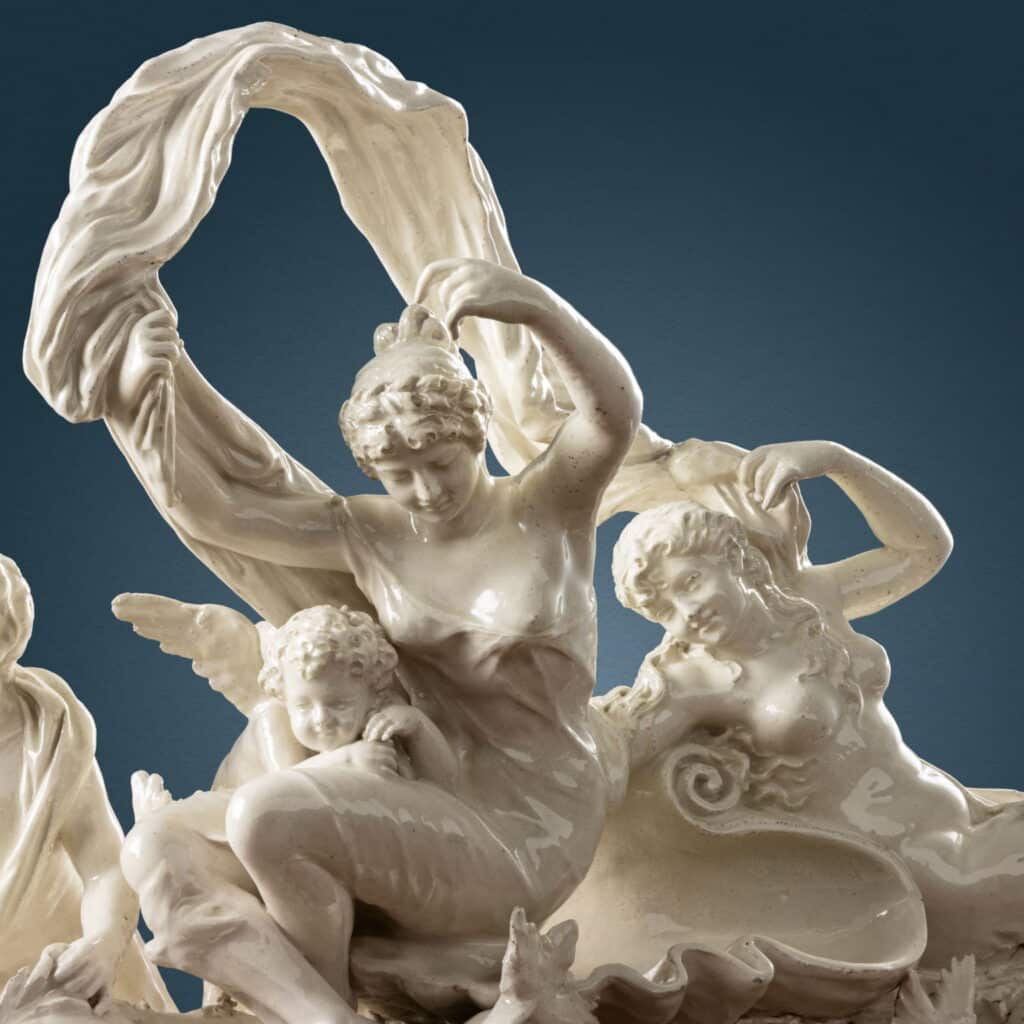Description:
White glazed ceramic depicting the Triumph of Galatea. The nymph is depicted on a chariot in the shape of a shell, pulled by three dolphins with the features of sea monsters; a drapery encircles her body, while with raised hands she holds a drape inflated by the sea breeze, helped by a mermaid behind her. A pair of cupids participates to the scene too, one astride one of the dolphins while the other is leaning on Galatea’s legs, and a marine deity blowing into a shell.
The figures rest on a base worked to emulate the waves of the sea, while the lower part is finished with a frame decorated with leaf motifs.
Dimensions: 53 x 65 x 28 cm
CODE: OGANOCE0228792
Historical Stylistic Analysis:
A specimen identical in subject and very close in size is known from the ministerial catalogue entry where it is listed as an artwork of the Capodimonte manufactory from the first half of the 19th century (https://catalogo.beniculturali.it/detail/HistoricOrArtisticProperty/1600036952). The sculptural group from a private collection, mutilated in some details, is catalogued as The Birth of Venus, whereas in our opinion it should more correctly be identified as The Triumph of Galatea.
This subject had a great fortune starting with the famous fresco painted by Raphael Sanzio in 1512 for the Villa Farnesina in Rome, being requested and treated numerous times in the following centuries. Our ceramics refer to an iconographic strand that became widespread from the 17th century onwards, with the nymph lying on the shell, framed by fluttering drapery and accompanied by figures, especially the male figure using the shell as if it were a wind instrument. The most pertinent comparison seems to be with a painting by Domenichino, known through an engraving from the first half of the 19th century by Auguste Jean Baptiste Marie Branchard. The composition is in fact reproduced punctually in our sculpture, albeit lightened of some characters for obvious practical reasons in the making of the ceramics.
While several pictorial examples are in fact known as variations on the theme, it is more difficult to find sculptural examples that refer to this representational typology, which was instead tackled by the Capodimonte manufactory by licensing several works, albeit with some slight modifications, such as the addition of the floral motif to decorate the base.
- The Triumph of Galatea. Capodimonte’s manufacture, first half XIX century.

Antiques, Art and Design
FineArt is the new ambitious Di Mano in Mano project that offers an exclusive choice of antiques and design works, presenting them for their singularity and uniqueness.

